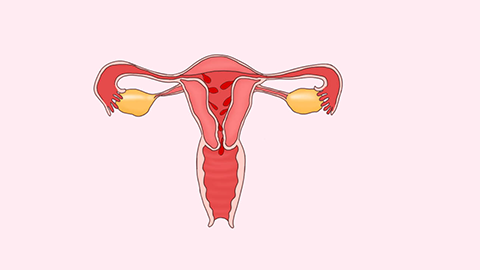What does it mean if the endometrium is not uniform?
Endometrial inhomogeneity may be caused by menstrual cycle changes, intrauterine device (IUD) irritation, endometritis, endometrial polyps, endometrial hyperplasia, and other factors. If abnormalities occur, timely medical attention is recommended. Detailed explanations are as follows:

1. Menstrual cycle changes: During the menstrual cycle, the endometrium undergoes processes of proliferation, secretion, and shedding. In the proliferative or early secretory phase, the endometrium may not grow completely synchronously, temporarily appearing inhomogeneous. This condition is usually physiological and does not require special treatment. It is recommended to undergo follow-up examination after menstruation to observe endometrial changes.
2. Intrauterine device (IUD) irritation: As a foreign body within the uterine cavity, the IUD may chronically irritate the endometrium, causing uneven local endometrial reactions. If accompanied by discomfort symptoms, removal of the IUD and choosing alternative contraceptive methods may be considered. The endometrium usually gradually returns to normal after removal.
3. Endometritis: Infection of the endometrium by bacteria or other pathogens causes inflammation, leading to endometrial congestion, edema, and uneven local proliferation. It is often accompanied by symptoms such as lower abdominal pain, increased vaginal discharge, and prolonged menstruation. Follow medical advice to use medications such as cefixime dispersible tablets, metronidazole tablets, and gynecological Qianjin tablets to control inflammation and promote endometrial repair.
4. Endometrial polyps: Localized excessive endometrial proliferation forms polyps, resulting in uneven endometrial morphology. Symptoms often include abnormal uterine bleeding, increased menstrual flow, and prolonged menstruation. Doctors generally recommend hysteroscopic polypectomy. Postoperative use of medications such as progesterone soft capsules, dydrogesterone tablets, and levonorgestrel ethinylestradiol tablets may help prevent recurrence.
5. Endometrial hyperplasia: Endocrine disorders causing excessive estrogen stimulation of the endometrium lead to abnormal endometrial proliferation and uneven thickness. Symptoms often include menstrual irregularities, excessive menstrual bleeding, and prolonged menstruation, with some cases potentially progressing to malignancy. Doctors may recommend medications such as medroxyprogesterone acetate tablets, megestrol acetate dispersible tablets, and progesterone capsules to regulate the endometrium.
In daily life, maintaining personal hygiene, avoiding unclean sexual activity, and reducing the risk of intrauterine infection are important. Regular gynecological examinations are necessary, especially when abnormal bleeding or other symptoms occur, requiring timely medical consultation for accurate diagnosis and treatment.




